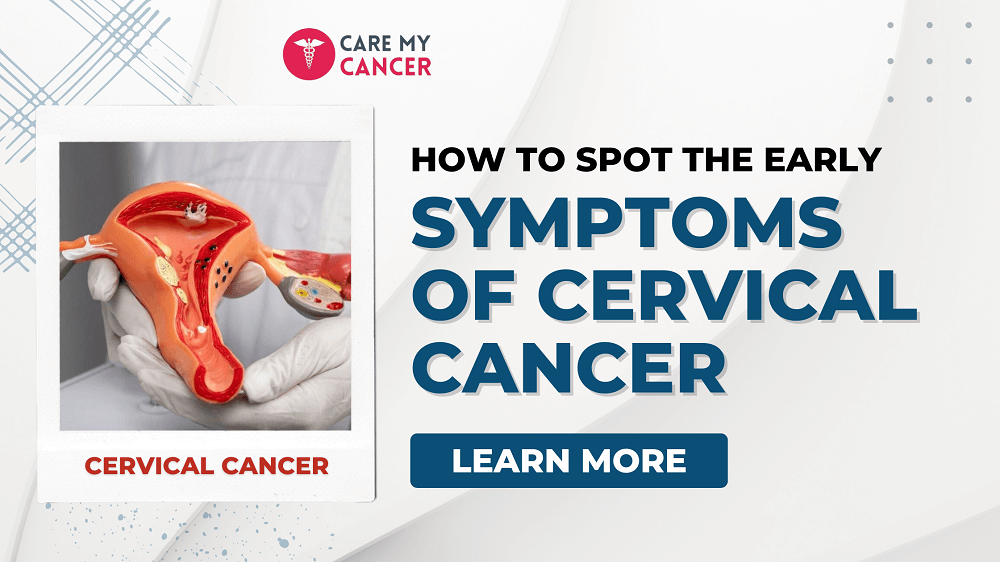Cervical cancer is a significant health concern for women worldwide. Early detection and timely intervention can dramatically improve outcomes, making it crucial to understand and recognize the early symptoms. This comprehensive guide aims to educate you on how to spot the early signs of cervical cancer and what steps you can take for early diagnosis and treatment.
Understanding Cervical Cancer
Cervical cancer originates in the cells of the cervix, the lower part of the uterus that connects to the vagina. It is most commonly caused by persistent infection with high-risk types of human papillomavirus (HPV). While HPV infections are common and often resolve on their own, chronic infections with high-risk strains can lead to the development of cervical cancer.
Importance of Early Detection
Early detection of cervical cancer significantly enhances the chances of successful treatment and recovery. When detected at an early stage, cervical cancer is highly treatable, and the survival rates are favorable. Regular screenings and being aware of early symptoms are key to early detection.
Early Symptoms of Cervical Cancer
Recognizing the early symptoms of cervical cancer can be challenging, as they may be subtle and easily mistaken for other common conditions. However, being vigilant and paying attention to any unusual changes can make a significant difference.
- Abnormal Vaginal Bleeding
- Intermenstrual Bleeding: Spotting or bleeding between periods, especially if it occurs frequently, can be an early sign of cervical cancer.
- Post-Coital Bleeding: Bleeding after sexual intercourse is a concerning symptom that should not be ignored.
- Post-Menopausal Bleeding: Any vaginal bleeding after menopause is abnormal and warrants immediate medical attention.
- Unusual Vaginal Discharge
- Foul-Smelling Discharge: A persistent, foul-smelling discharge can indicate an infection or other abnormalities in the cervix.
- Watery or Blood-Tinged Discharge: Discharge that is watery, pale, or mixed with blood could be an early sign of cervical cancer.
- Pelvic Pain and Discomfort
- Pelvic Pain: Persistent pelvic pain, especially if it is not related to menstruation, can be a symptom of cervical cancer.
- Pain During Intercourse: Pain or discomfort during sexual intercourse may be a sign of changes in the cervix.
- Urinary Symptoms
- Frequent Urination: Increased frequency of urination, especially if accompanied by pain, can be an early sign of cervical cancer.
- Blood in Urine: The presence of blood in urine, though less common, can indicate advanced cervical cancer affecting the bladder.
- Menstrual Changes
- Heavier or Longer Menstrual Periods: Significant changes in menstrual flow, such as heavier or longer periods, should be investigated.
Risk Factors for Cervical Cancer
Understanding the risk factors for cervical cancer can help you stay vigilant about your health. Some of the primary risk factors include:
- HPV Infection: The most significant risk factor for cervical cancer is a persistent infection with high-risk HPV types.
- Smoking: Tobacco use weakens the immune system, making it harder to clear HPV infections.
- Weak Immune System: Conditions that weaken the immune system, such as HIV/AIDS, increase the risk of cervical cancer.
- Multiple Sexual Partners: Having multiple sexual partners increases the likelihood of HPV infection.
- Early Sexual Activity: Engaging in sexual activity at a young age increases the risk of HPV infection.
Preventive Measures
Taking proactive steps to prevent cervical cancer is crucial. Here are some effective preventive measures:
- HPV Vaccination
- Vaccination: The HPV vaccine is highly effective in preventing infections with the most common high-risk HPV types. It is recommended for preteens but can also benefit older individuals who have not been vaccinated.
- Regular Screenings
- Pap Smear Test: Regular Pap smear tests can detect precancerous changes in the cervix, allowing for early intervention.
- HPV Test: An HPV test can identify the presence of high-risk HPV strains, providing valuable information about your risk.
- Safe Sexual Practices
- Condom Use: Using condoms during sexual activity reduces the risk of HPV transmission.
- Limiting Sexual Partners: Reducing the number of sexual partners lowers the risk of HPV infection.
- Quitting Smoking
- Smoking Cessation: Quitting smoking can improve your overall health and reduce the risk of cervical cancer.
What to Do If You Notice Symptoms
If you notice any of the early symptoms of cervical cancer, it is essential to seek medical attention promptly. Here are the steps you should take:
- Schedule a Medical Appointment
- Consult Your Gynecologist: Make an appointment with your gynecologist to discuss your symptoms and undergo a thorough examination.
- Undergo Recommended Tests
- Pap Smear and HPV Test: Your doctor may recommend a Pap smear and an HPV test to check for abnormal cells and HPV infection.
- Colposcopy: If abnormal cells are detected, a colposcopy (a procedure that uses a special microscope to examine the cervix) may be performed.
- Follow Medical Advice
- Treatment Plan: Follow your doctor’s recommendations for further tests, treatments, or follow-up appointments.
- Regular Check-Ups: Even if no abnormalities are found, continue with regular screenings as advised by your healthcare provider.
Conclusion
Spotting the early symptoms of cervical cancer can significantly improve the chances of successful treatment and recovery. Being aware of the signs, understanding the risk factors, and taking preventive measures such as HPV vaccination and regular screenings are essential steps in safeguarding your health. If you notice any unusual symptoms, do not hesitate to seek medical attention. Early detection and timely intervention are the keys to effectively combating cervical cancer and ensuring a healthier future.

